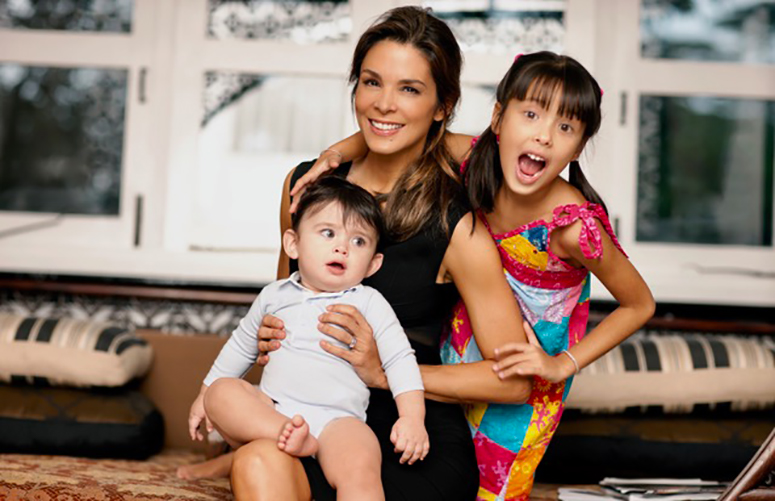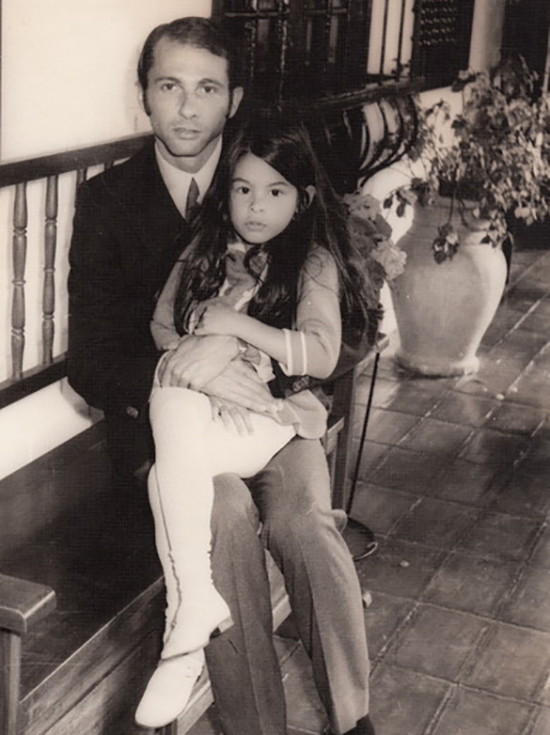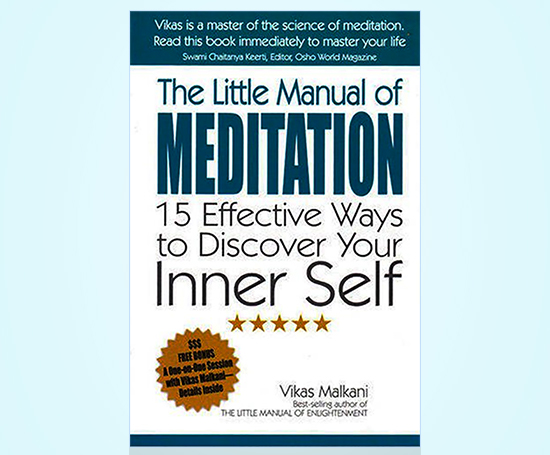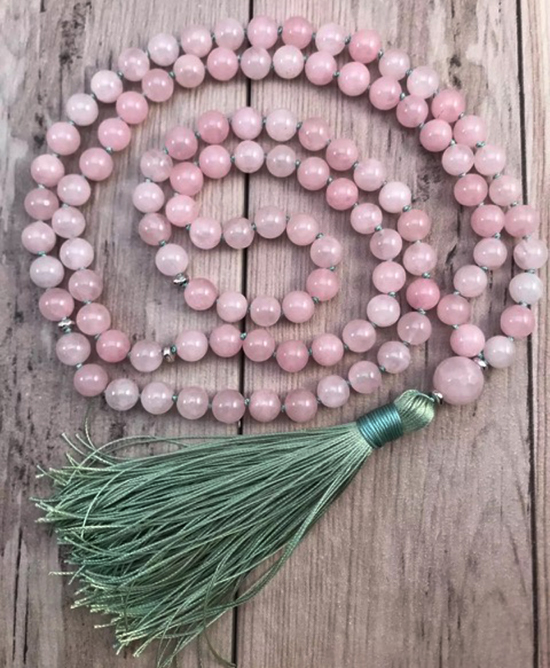Meditation made simple
Interest in mindfulness has increased in the past few decades, but has soared exponentially in the last two years. The world is yearning for ways to heal and move forward after a pandemic that brought much anxiety, fear, loss and uncertainty.
Meditation is a subject close to my heart. My first exposure to it was as a child living in Colombia. I would see my father, Miguel, propped up on his chair, stock-still, eyes closed, taking deep breaths, for what seemed like an endless amount of time and, honestly, it was a bit freaky to witness. The man I knew since birth as lively, playful and highly energetic was now transfixed, distant and disconnected from the world.
He eventually did sit me down and explained the concept and the name of his practice: Transcendental meditation, which of course, at the age of six meant little to me. How beneficial could it be, for anyone to sit still with closed eyes, in total silence, counting breaths when there was so much playing and noise to be made?

I was able to answer that question 25 years later.
I began seriously understanding the benefits of meditation when I moved to Singapore. My yoga practice taught me the basics, but only after my daughter was born did the need for it really kick in.
One of the most common misconceptions holding back its widespread adoption into the western healthcare and education systems is that meditation is seen as a “religious” activity.
Becoming a parent has been the most important decision and life-changing experience I have had by far. The enormous responsibility of caring for a tiny human being that needs constant nurturing, protection and unconditional love was not only overwhelming but also quite frightening.

How well equipped was I to do this job? How balanced was I, emotionally, mentally and spiritually to successfully bring up this child to become a happy, stable and responsible human being? Ugh. Serious stuff to ponder.
With all those queries in mind, I headed to the bookstore to equip myself with some written knowledge, purchasing all the bestselling parenting books I thought were relevant. As I was walking out, one small book caught my attention. It was simply titled The Little Manual of Meditation by Vikas Malkani. I added it to the pile.

Reading that book marked the beginning of my journey into the world of mindfulness.
Meditation has been around for centuries. Traced back to 1,500 BCE in India, it is based on the oldest written records that come from the Hindu tradition of Vedantism directly referring to the training of the mind.
Today, the Oxford dictionary defines it as “a practice in which an individual uses a technique — such as mindfulness, or focusing the mind on a particular object or thought — to train attention and awareness, and achieve a mentally clear and emotionally calm and stable state.”
One of the most common misconceptions holding back its widespread adoption into the western healthcare and education systems is that meditation is seen, in some way, as a “religious” activity, a “Hindu tradition” or “Buddhist ritual” of some kind. Meditation is secular and not a religious practice. In truth, meditation is simply an exercise to strengthen and train the brain.
Learning how to meditate is like any other skill. You need to practice it enough to master it. There are various types of meditations to choose from and it is all a matter of choosing the one that works for you. The most important rule to remember is to be perseverant and practice it daily. Don’t wait for stressful moments to happen to begin meditating. Practice while things are normal, while the “waters” are calm. Training your mind to be steady and less reactive is almost like fitting stabilizers within yourself that allow you to stay afloat when unexpected storms hit, helping you keep your head above water and not drown.
Here are a few techniques to consider:
Mindfulness meditation: You pay attention to your thoughts as they pass through your mind. You don’t judge them or become involved with them. Simply observe and take note of any patterns. This type of meditation is good for people who don’t have a teacher to guide them, as it can be easily practiced alone.

Focused meditation: Involves concentration using any of the five senses. You can focus on something internal, like your breath; you can also bring in external influences to help focus your attention, such as staring at a candle flame or counting mala beads. As the name suggests, this practice is ideal for anyone who wants to sharpen their focus and attention.
Movement meditation: This practice includes walking, tai chi, qi gong or gardening. This is an active form of meditation where the movement guides you into a deeper connection with your body and the present moment.
Mantra meditation: This type uses a repetitive sound to clear the mind. It can be a word, phrase or sound, one of the most common being “Om.” Your mantra can be spoken loudly or quietly. Some people enjoy mantra meditation because they find it easier to focus on a word than on their breath.

Transcendental meditation: Transcendental Meditation (TM) is a type of meditation that’s been the subject of numerous studies in the scientific community. Founded by Maharishi Mahesh Yogi, it refers to a specific practice designed to quiet the mind and induce a state of calm and peace. It involves the use of mantra and is best taught by a certified TM practitioner.
Loving-Kindness meditation: is used to strengthen feelings of compassion, kindness, and acceptance toward oneself and others. Because this type of meditation is intended to promote compassion and kindness, it may be ideal for those holding feelings of anger or resentment.
Visualization or guided meditation: This is led by another person or teacher in person or through audio and video. This type of practice helps you focus with the guidance of a trained meditator and is today one of the preferred ways to meditate. Many apps are available to successfully make meditation an easy daily practice, like Calm, Headspace, Breethe, Balance, Ten Percent Happier and Unplug. They are user-friendly, affordable and regularly updated with new research and features.
Whichever method you choose, keep in mind that a consistent practice — even just quieting the mind for five minutes a day — is more useful than sessions that are longer but infrequent. In the end, the best meditation technique and the one that will help you gain the most positive benefits is one you can stick to.
What are the health benefits?
For years, scientific studies confirm that “practicing meditation has an impressive variety of neurological benefits, from changes in gray matter volume to reducing activity in the brain centers, to enhanced connectivity between the brain regions” according to Forbes.com
Medical experts at Mayo write: “Meditation can reduce the areas of anxiety, chronic pain, depression, heart disease and high blood pressure. The heart rate drops, your respiratory rate drops and the body begins to heal itself and starts to repair.”
Other benefits reported are: better sleep, better focus, lowers stress, decreases dependency on drugs and helps control asthma. These are all solid and compelling reasons to give it a try.
How to start?
Decide. Establish that you are interested and willing to commit to 10- 20 minutes a day.
Take a seat. Find a place to sit that feels calm and quiet to you. Make sure to position yourself upright with a straight back on a chair, cushion, floor or wherever you feel at ease.
Set a time limit. If you’re just beginning, start with five or 10 minutes. You can gradually increase the duration of the meditation session up to 15 or 20 minutes once you have trained your mind well. There is an old Zen proverb that reads: “You should sit in meditation for 20 minutes in a day. Unless you are too busy; then you should sit for an hour.”

Notice your body. You can sit in a chair with your feet on the floor, you can sit loosely cross-legged, you can kneel but make sure you are stable and in a position you can stay in for a while.
Be aware of your breathing. Follow the sensation of your breath as you inhale and exhale.
Notice when your mind has wandered. Once you notice that you are distracted with other thoughts, simply return your attention to your breath.
Be kind to yourself. Don’t judge or obsess over the content of the thoughts you find yourself lost in. Just come back.
Find a teacher. As with anything new we expect to learn, guidance from experts is fundamental. Research and find the best. My first meditation teacher was Vikas Malkani, the author of that little book I picked up on my way out of the bookstore.
To my luck and delight, he was based — and still is — in Singapore and through his wisdom, mastery and teachings, I had the chance to deeply and wholeheartedly delve into this subject. He is the founder of SoulCentre and Soulkids, which offers mindful programs for adults and children, as well as an author, life coach and inspirational speaker on self-development and personal growth. You may look him up at www.soulcentre.org
Children, teenagers and meditation
Children are uniquely suited to benefit from mindfulness practice. “Habits formed early in life will inform behaviors in adulthood, and with mindfulness, we have the opportunity to give our children the habit of being peaceful, kind and accepting” reports The New York Times.
Part of the reason why mindfulness is so effective for children can be explained by the way the brain develops. “While our brains are constantly developing throughout our lives, connections in the prefrontal circuits are created at their fastest rate during childhood.” Mindfulness, which promotes skills that are controlled in the prefrontal cortex, like focus and cognitive control, can therefore have a particular impact on the development of skills, including self-regulation, judgment and patience during childhood.”.
Teens can sometimes be impulsive and angst-ridden even during the best of times. Behavioural health therapist Dr. Jane Ehrman writes, “With 15 minutes of daily meditation for at least three weeks, the brain becomes more responsive and less reactive, which can be especially helpful to teens prone to anxiety or any type of erratic behavior.”

Headspace defines it flawlessly: “Meditation isn’t about becoming a different person, a new person or even a better person. It is about training in awareness and getting a healthy sense of perspective. You’re not trying to turn off your thoughts or feelings. You are just learning to observe them without judgment.”
Other books worth the read are: The Art of Happiness by the Dalai Lama, 10% Happier by Dan Harris, Real Happiness by Sharon Salzberg and The Power of Now by Eckhart Tolle.
At a personal level, it was a tool that helped me understand and let go of the things I had no control over, empowered me to face my fears, find peace within myself, ground me in times of turmoil and calmly raise two mindful children who are my biggest pride and who, in turn, have become regular meditators themselves.


